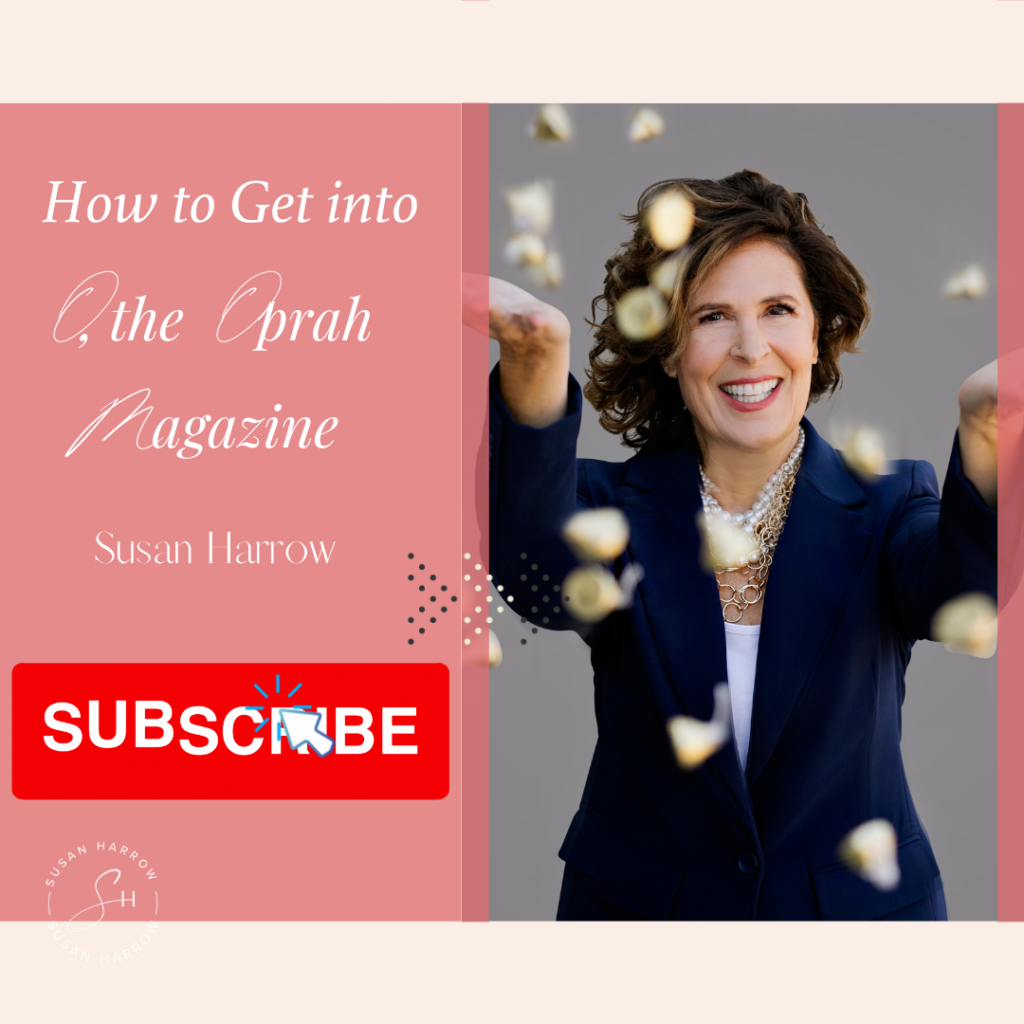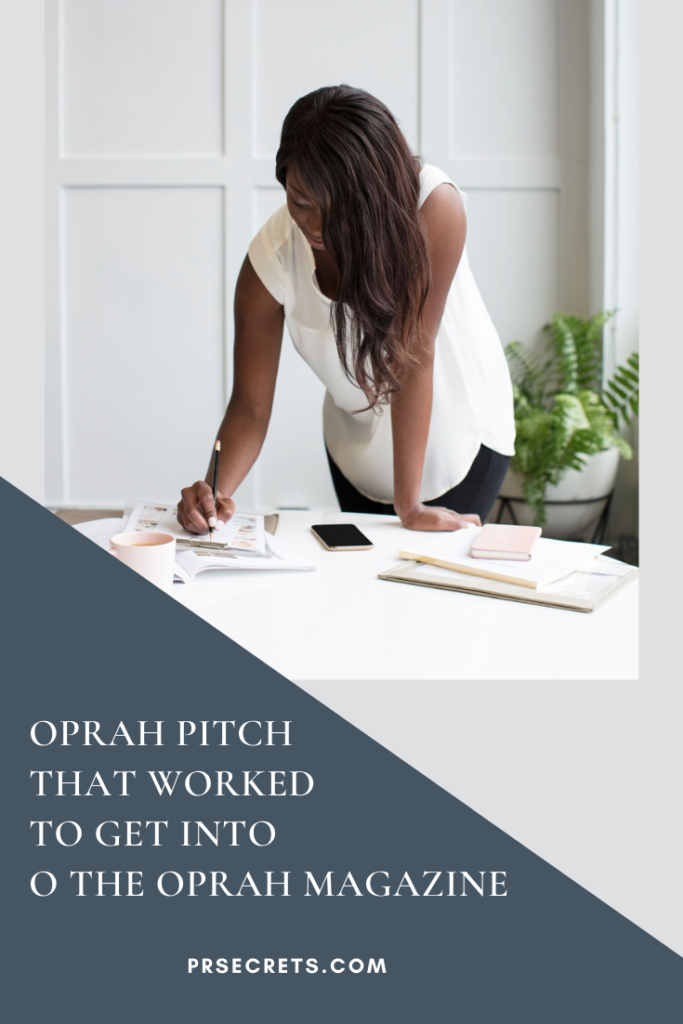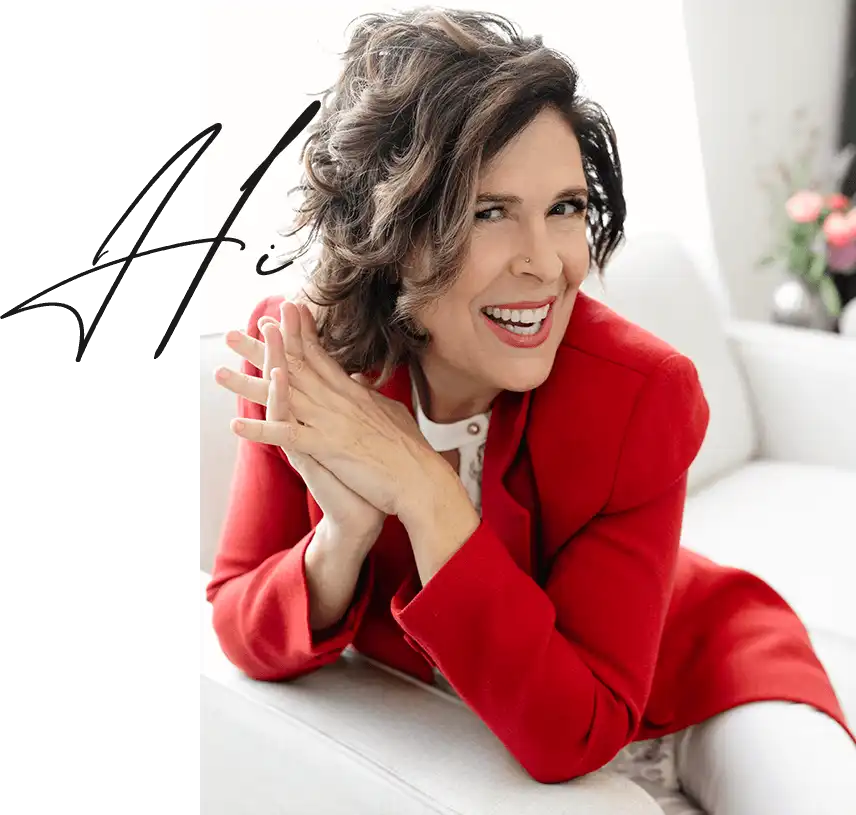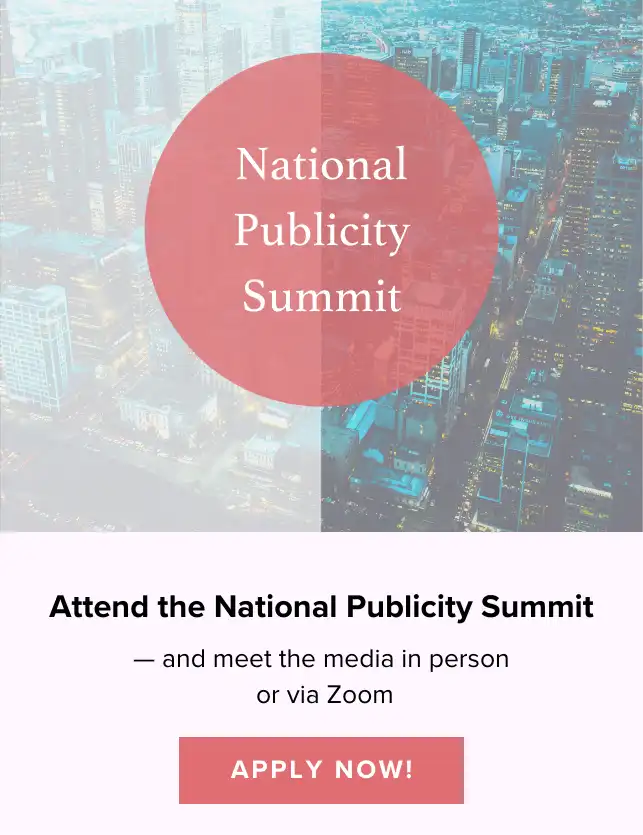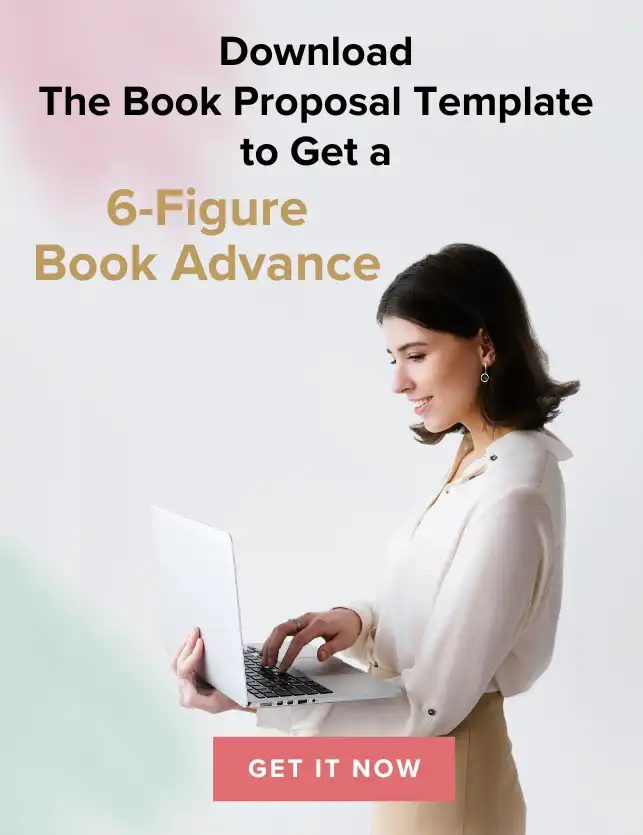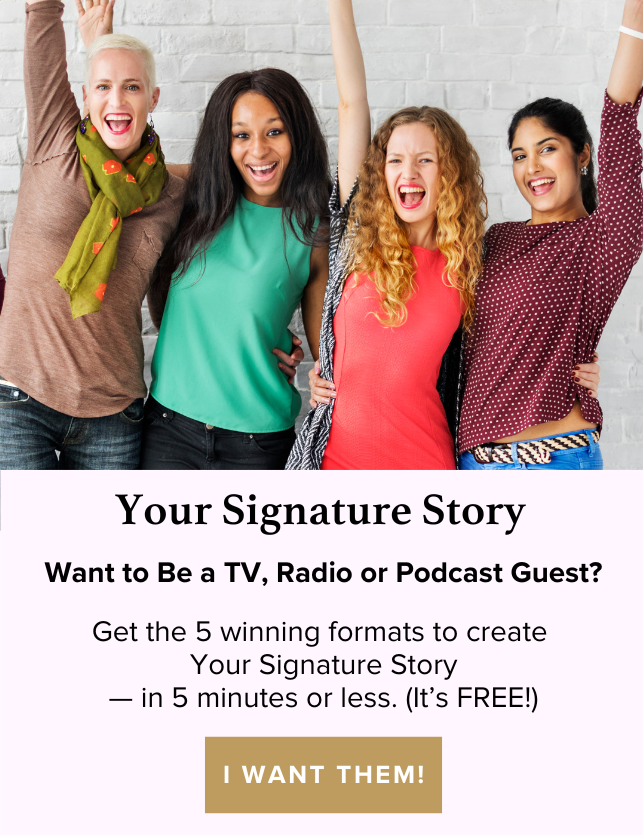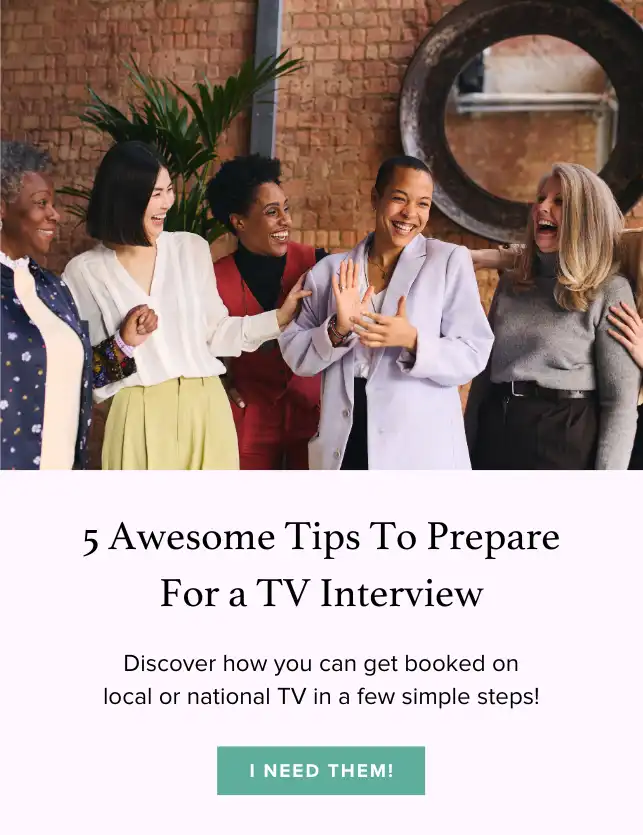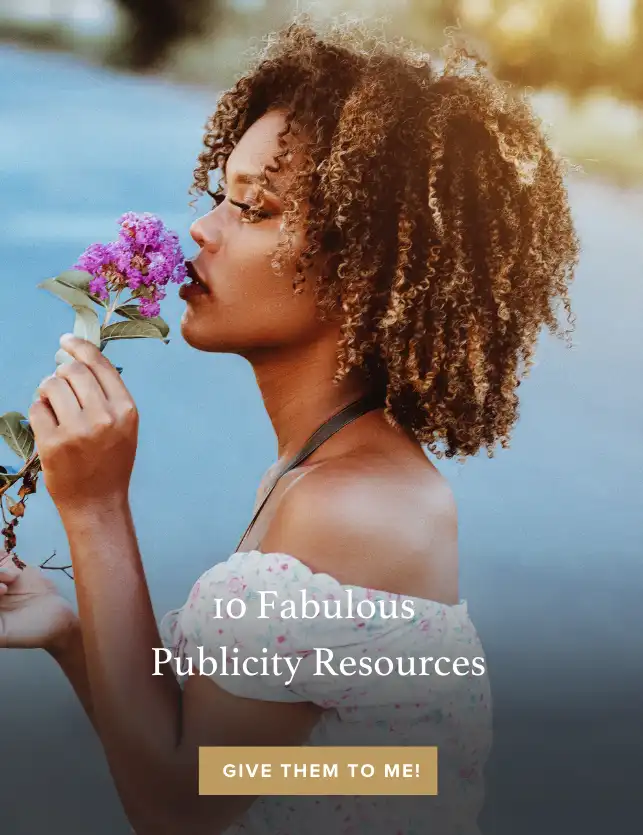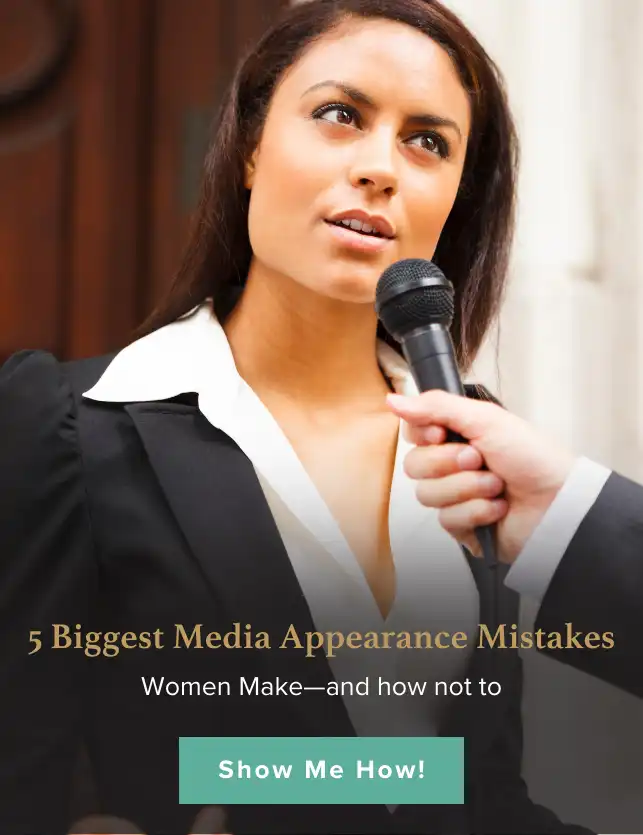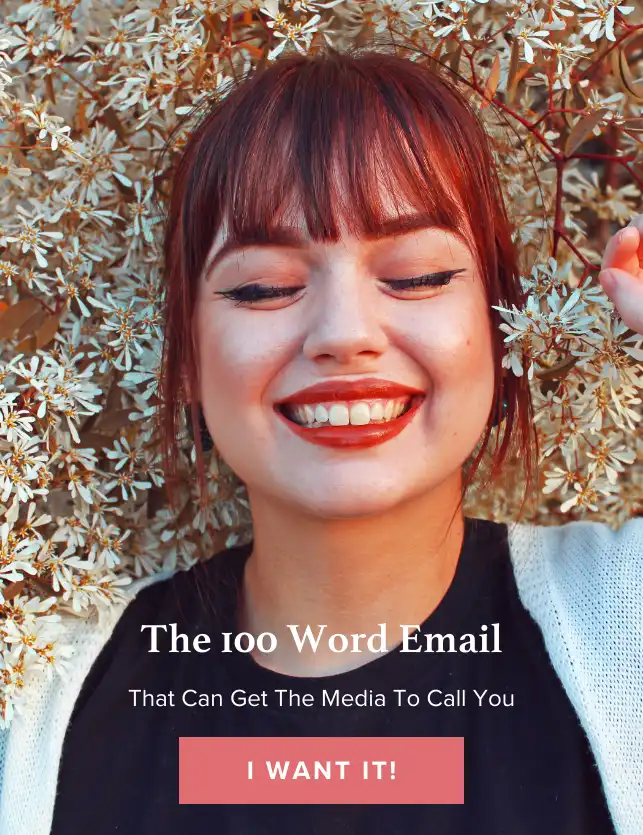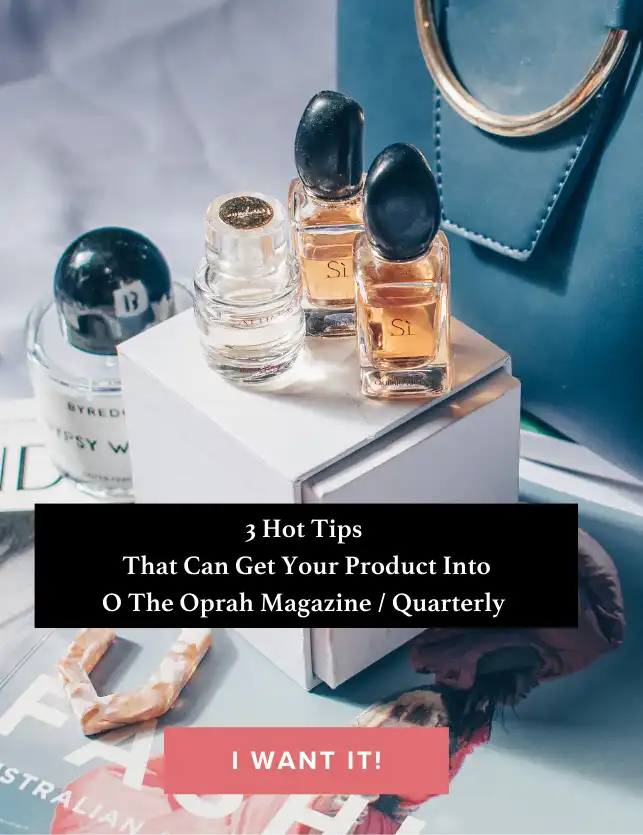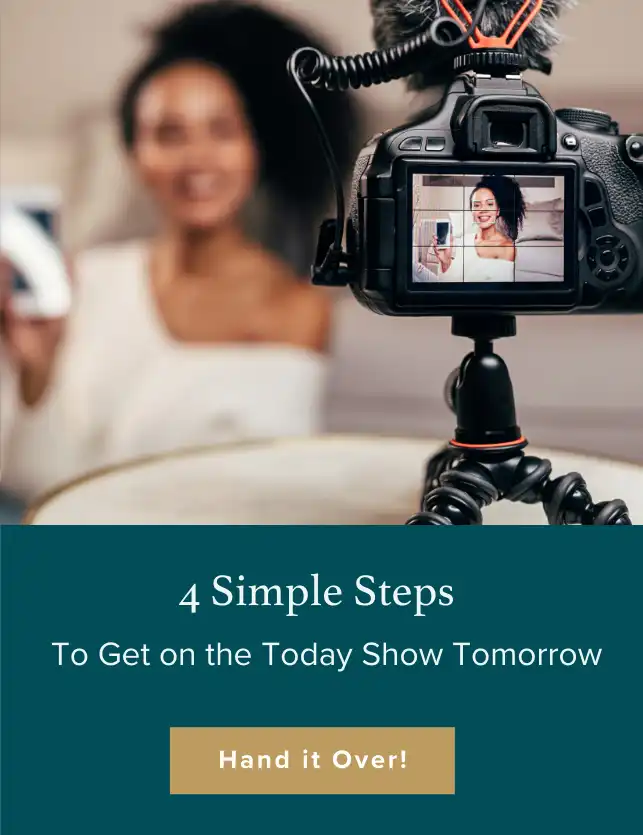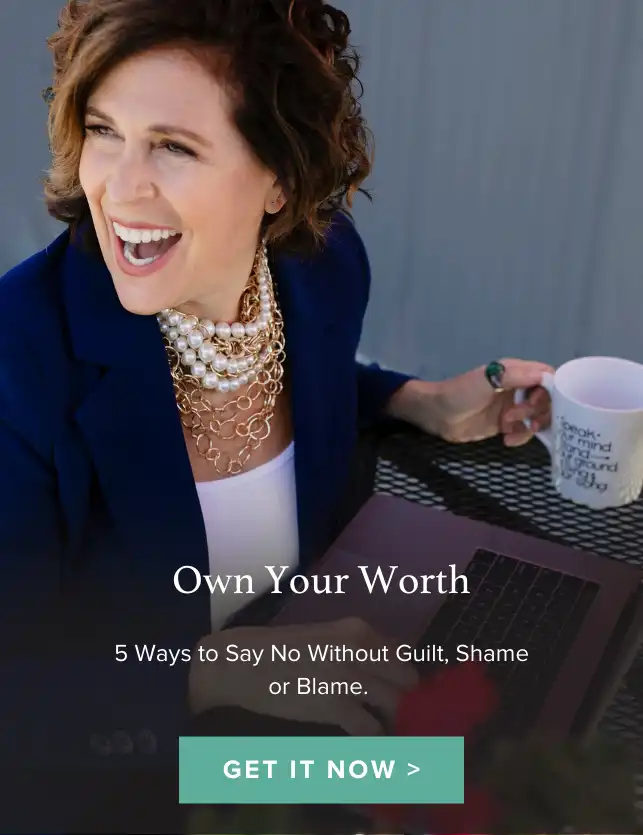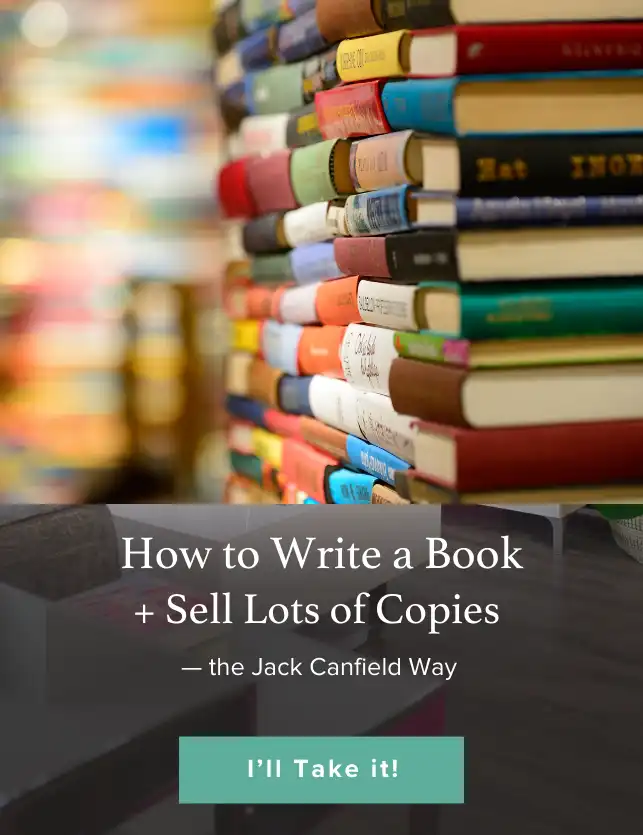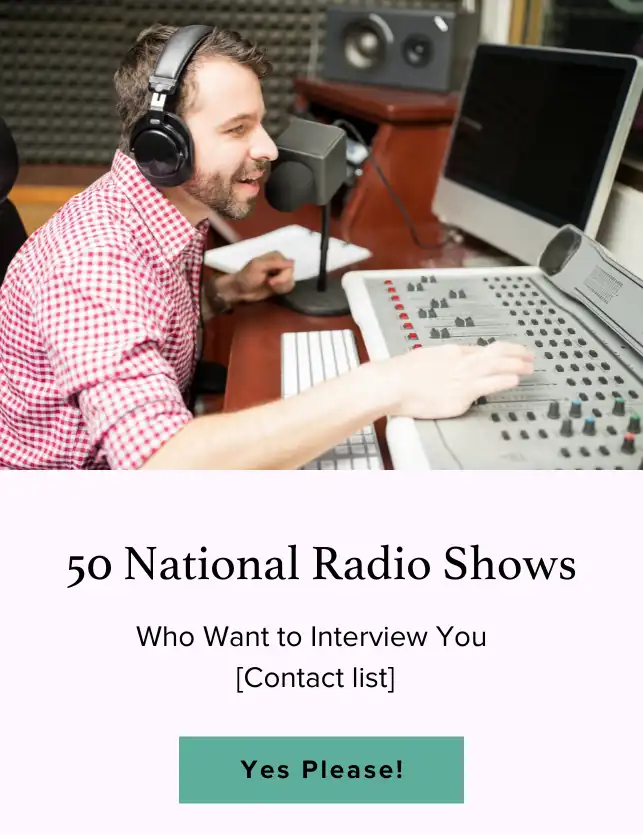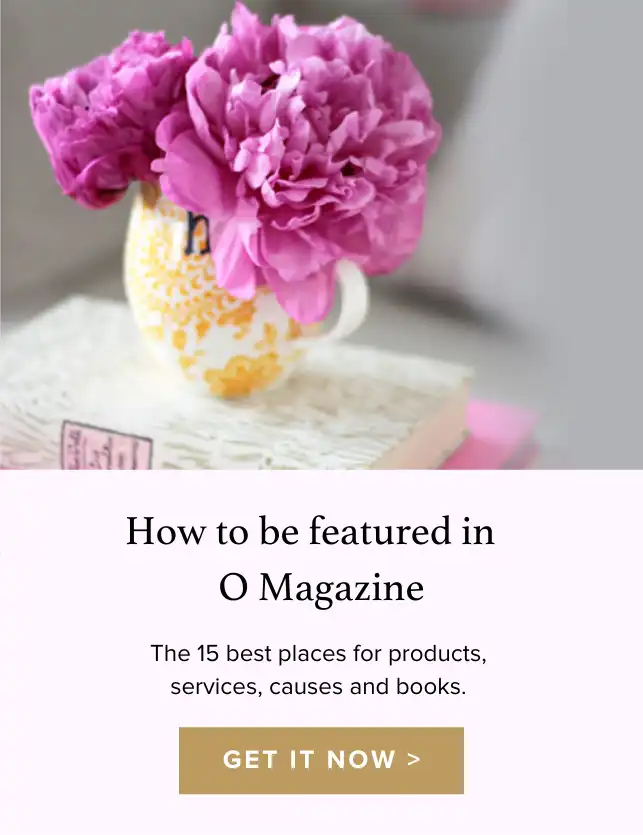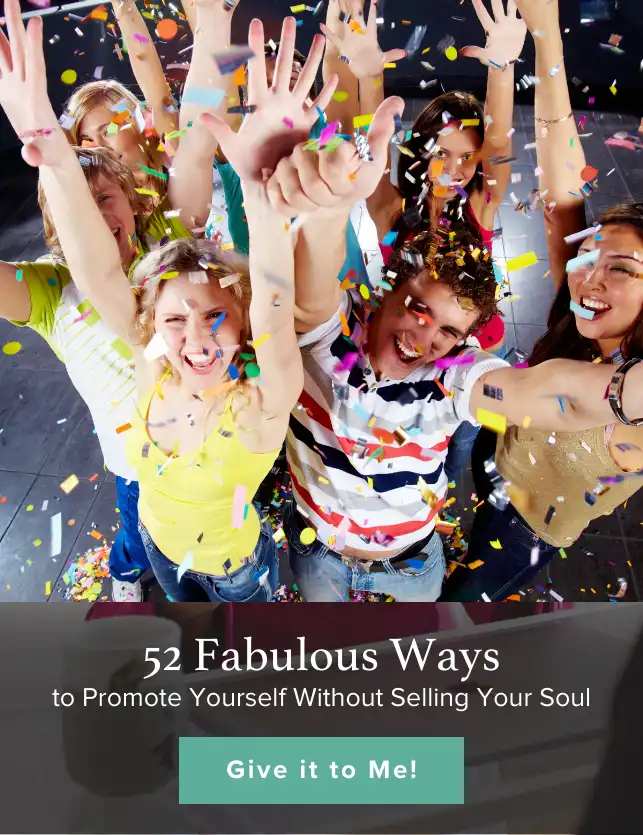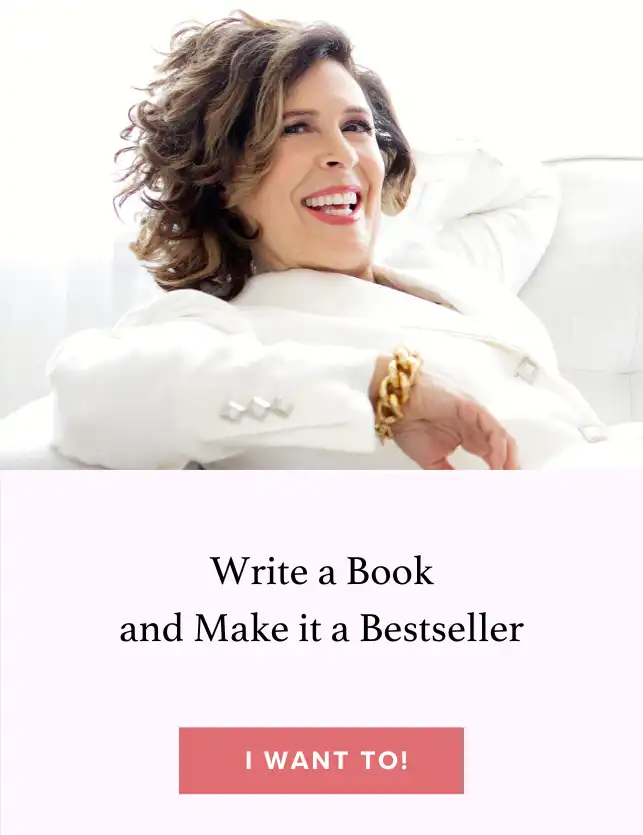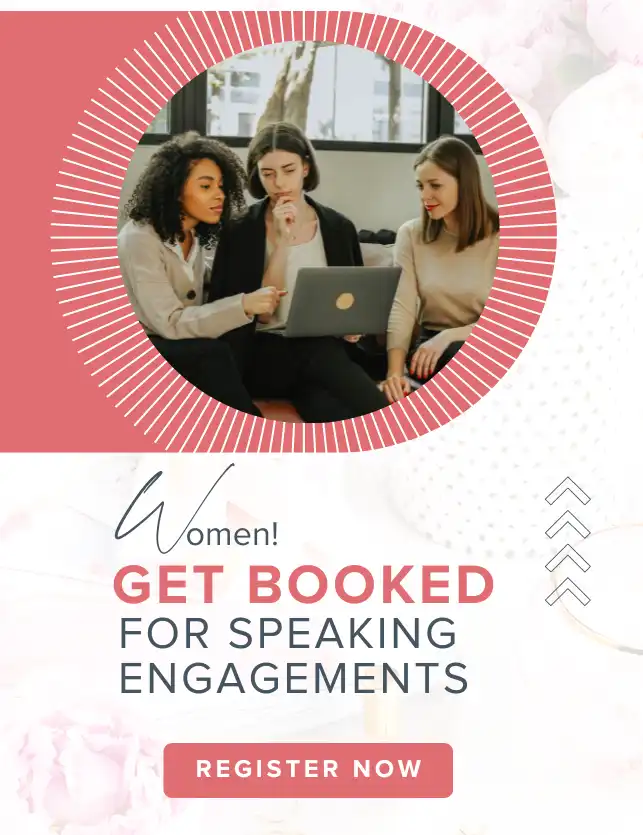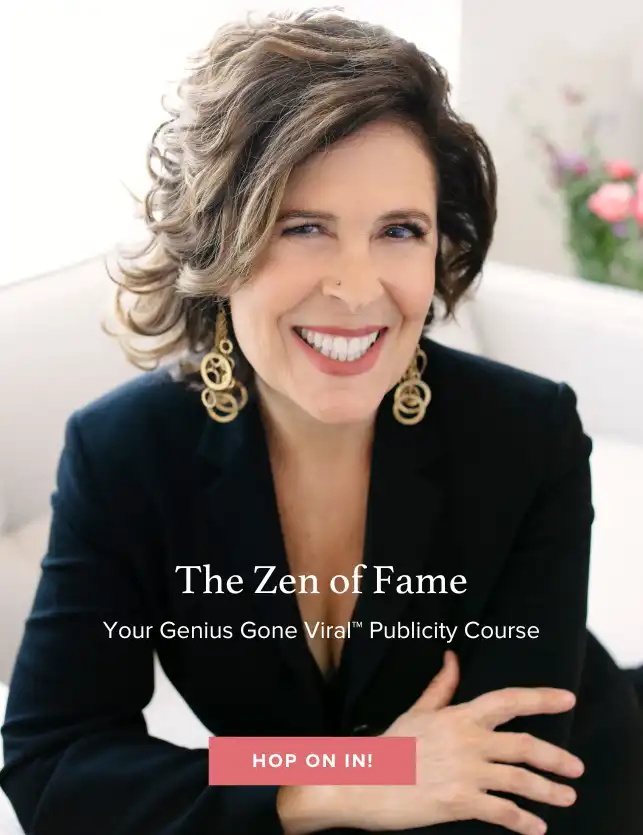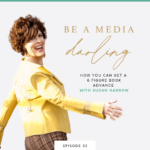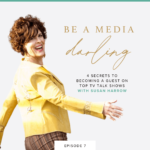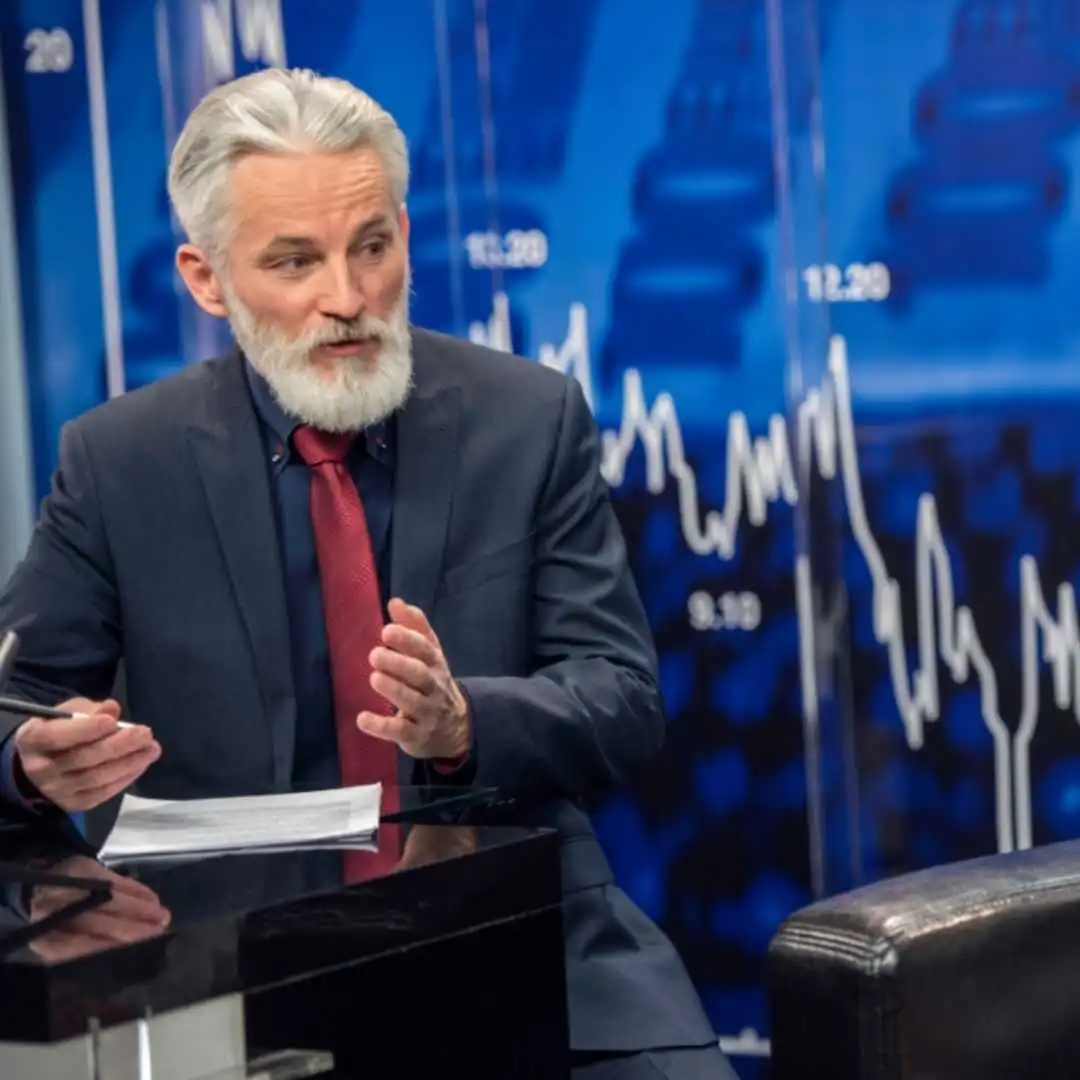How to get into O Magazine – Interview by Karen Leland – Thought Talk Podcast
Pitch, packaging, preparation, and perseverance — Getting Into O Magazine
Karen Leland: Hi, everyone, welcome to the Thought Talk. My guest today is Susan Harrow. She is the top media coach, a marketing strategist, and a PR expert. She is also the author of the best-selling book, Sell Yourself Without Selling Your Soul® by HarperCollins. For the past 30 years, she’s helped 1000s of people from CEOs to celebrity chefs, rockstars and best-selling authors learn to shine in the media. Susan, welcome.
Susan Harrow: Thanks so much. It’s such a pleasure to hang out here with you.
Karen Leland: I know we’ve been friends a long time. I should disclose that right up front. Full disclosure. Do you think it’s 10 or 12? years?
Susan Harrow: I think it may even be longer.
Karen Leland: Oh, wow. Really?
Susan Harrow: I think so. Yeah. I mean, it seems longer.
Karen Leland: That doesn’t sound right, it seems longer.
Susan Harrow: We kind of became BFFs. Close friends, like almost immediately, I think we were really able to sink down into talking about things that were meaningful instead of surface talk. And that kind of connection really holds up over time and really has nothing to do with time as it stands, right? Like you meet somebody and you’re like, Okay, we connect deeply. And let’s move forward with that friendship.
The Importance of Connecting with People During Media Appearances.
Karen Leland: That’s really well said. And it’s funny because that’s actually a great introduction to what we’re going to talk about because we’re going to talk about O Magazine. And I’ll tell you, someone, I think who’s really done that well is Oprah, I think Oprah’s success was her ability to connect with people in that way.
Susan Harrow: She is brilliant at that. One of the advantages that she had of doing that is that she got people to open up right away on her show. It’s really common that people are talking about issues that are really personal. But at that time, it was not common. And Oprah gave people the platform to speak about it, but also the acceptance.
I think that’s a really huge thing that when people were ashamed of certain things in their past, she opened the door to allow people to be who they are with the past that they have, and that other people all over the world could really relate to that. And she carried that into O, Magazine because it’s both girl-friendly and worldly. And I think that that’s why it’s held up in this day and age when so many other magazines have folded and O, is still going strong.
Why Oprah Magazine Is The Gold Standard For PR.
Karen Leland: Yeah, I think you’re completely right. As you know, because we both done publicity and PR and as a branding and marketing strategist, when Oprah had her television show on, every person in the world who called me up was, I want to be on Oprah. And I’d be, okay, but you manufacture peanut butter. That happened to me actually once. I honestly don’t think I can get you on Oprah for the peanut butter. “But it’s the best peanut butter in the world!” And I’m like, “I know it is. But I don’t think Oprah is gonna have you on as a guest for your peanut butter.”
But a lot of people did get instantly famous being on Oprah. But the show is gone and that kind of leaves a huge gap. So you have these authors and entrepreneurs and other people that don’t really understand how to bridge that gap between the magazine that still exists and the show. Can you just talk a little bit about that?
Susan Harrow: Yeah, and I want to start off by saying the peanut butter guy might be a great fit for O magazine.
Are You A Great Fit For O Magazine?
Karen Leland: Right. It actually would be a great fit for O Magazine.
Susan Harrow: Yeah. So the gap really is that number 1, the Oprah effect is still in effect with the magazine and a lot of people don’t know that. They think oh my god, her show is gone. Boo hoo hoo. Now I can’t have the kind of instant success that I’d hoped for that catapulted so many people to fame and glory. People always believed that a million dollars would be dumped on their doorstep and sometimes it was right. So in O, Magazine, the great thing is it can double or triple your sales overnight and then sustain it if you’re positioned, packaged, and prepared properly for what O wants.
So there is the possibility for authors, entrepreneurs, and anyone in the transformational space to get into O, books too obviously. The most space though is given to food, fashion, health and wellness, some tech, and then transformation and writers who are essayists or that sort of thing. But there’s an enormous possibility for people with products.
Karen Leland: All kinds of products, or they particularly look at certain kinds of products.
Susan Harrow: Products that pertain to women. But that being said, when you’re in the food category. It’s not just chocolate or popcorn, or wine. You have that whole huge category. Same with fashion, and wellness, it has to be of interest to women, and Oprah’s particular audience. So that covers African American women…
Karen Leland: Yeah. What is her particular audience right now for that magazine?
Susan Harrow: Well, it is, you know, women, I mean, obviously, it’s women. Some men confess that they read O, but really-
Karen Leland: Hi, my name is Jim and I read O, Magazine.
Susan Harrow: But mostly, it is really women. And it’s anyone from 25 to over 60. The important thing about the audience, not only who reads it, women all the way up to menopausal women, right? Oprah’s age. Obviously, as she gets older, I think the audience is going to extend too. But the important thing is it pertains specifically to women and any kind of issue or product that pertains specifically to women.
So that also extends to packaging. How is your product or your service or your cause beautifully packaged? That it’s not only gorgeous and thoughtful, both inside and out but it really addresses any kind of issue or challenge or interest of women from that large age group. I think that the nice thing about O, Magazine that’s different from the show is there is room to be more thoughtful and to expand on whatever message you have to give or whatever product you have that serves. There’s the latitude there where you didn’t have that in the show. You’ve got a couple of seconds or a couple of minutes on the show.
Getting On Oprah’s Favorite Things.
Karen Leland: Do you think she’s been able to translate her brand from the TV show to the magazine? And has it changed? Is the brand different: magazine or TV?
Susan Harrow: I think she extended it really well. And I want to go back to the product thing. People come to me all the time and they say I want to get on Oprah’s Favorite Things. So the way to get on Oprah’s Favorite Things is really two ways. First, get into the magazine because the editors of O, Magazine, look at those first. What’s already been vetted, and what’s already been chosen by the magazine.
And then the second way is to meet Adam Glassman at a trade show. So if you do have a product, and you’re going to a trade show that is something. Meeting Adam, and presenting your product is a great way to get on their radar. Now all of that being said, Oprah has the final say. So editors might love it, and Adam Glassman might love it, if Oprah doesn’t, it’s not getting on Favorite Things. She is the very last. So it’s not like a vote.
Karen Leland: They funnel, they curate and funnel to her, and then she makes the choice. One of the things is, that I watched her go from her show, which I loved and was on at one point, which is fun to the magazine, which I love and still get a subscription too. But also, I wonder when she wanted to Weight Watchers I remember thinking, now this might be pushing it a little too far. It’s a little bit of a brand extension. It’s like overexposed and I’m sort of wondering just what your thought is about that.
The Danger of Potentially Diluting Your Brand.
Susan Harrow: I think that’s always something to consider. Are you diluting your brand? Are you strengthening your brand? Especially for influencers who are connecting with brands. I think some people just do it for the money and some people do it really very well considered. So it looks like she’s extended that partnership.
And let’s see, she joined the Weight Watchers brand in 2015 and bought a 10% stake in the company worth $43 million. However, she sold some of her stake in the past few years. Now, to address your question, is that good or bad for her brand? It’s an interesting one. I don’t know the answer to that. But what I can say is that Oprah and her audience are always interested in weight loss.
Karen Leland: It’s really true. It is a consistent theme. I’ve got to agree with you there.
Susan Harrow: It’s a consistent theme and it’s a consistent theme throughout our culture, for everything. Even with the rise of little heftier Supermodels, or whatever. Now there’s a whole sort of glorification and acceptance of, and there is some glorification, I want to be clear. There’s both glorification and on the positive side, more acceptance of different body sizes and shapes. Now, that being said about Oprah, what happened when she got thin at one point and lost all that weight, her audience felt she betrayed them.
And they’re, you’re not one of us anymore. So there’s a really interesting thought in terms of your brand. If you are branded as Oprah, and you’re hefty, and you get thin, are you going to alienate the part of your brand, you are aspirational in that way if you get thin. All the people who are still struggling, who haven’t lost weight? Have you just lost them?
I remember her saying how hurtful it was to have that backlash with people who felt that she had abandoned them, and was no longer part of the tribe. So is there an easy answer for that? No. Personally, as a brand, you need to consider what’s best for you, health-wise, as well as for your brand. But just to know that you can’t please everyone. And who is your core audience? And does it matter to you if people are angry and how to address that? I think that’s the bigger question.
Perserverance Is The Name of The Game When Pitching O Magazine.
Karen Leland: Well, and I think that’s a really good point. Because I think just being famous and well known and loved, doesn’t mean you can do anything you want. You have to really be thinking about what is the brand and to that point, Oprah Magazine is great, but that doesn’t mean that everyone is a fit for it. Or every product, or every service, or every writer is a fit for it, right?
Susan Harrow: Oh, Lord, no. Oh, Lord. No, I mean, and the fit is very specific because Oprah is the crème de la crème, the top of the top. So to get in there as a writer, as an essayist, it’s really difficult. People often say, “Well, I want to get in, I want to write for O,” and it’s possible. Absolutely. There’s a big place for freelancers. But also really consider, are you a good match for O, and O’s audience? Now, everybody wants to be in there but that doesn’t mean that they’re a good match. Part of that is your pitch, your packaging, your preparation, and your perseverance, because getting into O Magazine can be a three-month to three-year process.
Karen Leland: Three years. Amazing.
Susan Harrow: But it’s worth it. So that’s where the perseverance comes in. Okay, maybe I pitched and I didn’t get a response. Well, is it the right angle? Did you write the right headline? Is your product right? I mean, you need to experiment, because those are questions after you’ve studied the magazine too. People go, I really think I am a fit. But did you express that in your subject line? Which is the first line of your email to even get that opened. Because if it’s not interesting enough for them to open it, they never read the rest of your email. You know that as a publicist.
And so I don’t recommend that you just go sending things in willy-nilly, I recommend that you get invited. To get invited, you need to capture the editor’s attention with something that is really extraordinary. Then back that up with whatever your business, book, product, service, or cause is, beautifully packaged inside and out.
Packaging Counts – And It’s More Than Just Your Product or Service.
Karen Leland: It’s funny you’ve been talking about beautifully packaged, and I’m constantly having this conversation with CEOs, about the way things are packaged. The way either a website is packaged, or the way a product is packaged, or the way their one sheet is packaged, or even the way they look on video and how they’re packaged when they’re doing an interview. And it amazes me how people still don’t really get the power of the packaging.
Susan Harrow: I agree with you. People get you in really a split second.
Karen Leland: It’s that whole thing about thin slicing that Malcolm Gladwell talks about like that.
Susan Harrow: Right. And it’s the same on your website. The immediate impression of you, then that has to be backed up by your videos. And this is something that relates to being vetted by Oprah, you might have a fabulous website, and then they see you on video and it doesn’t match.
Karen Leland: Right. And that’s a problem if it’s not congruent.
Susan Harrow: It’s absolutely a problem. And when I work with people, media training them, everything they do, say, are, and think from their words to their website, to the feel of their needs to be in complete alignment for their offer to work, whether it’s an O Magazine or anything. So that congruency which you’re calling brand relates to everything. It’s not just the look and feel of your website, it’s you. And how you are showing up right now on video or on TV, in print. All of that needs to be in alignment.
Karen Leland: People always think of their brand as their logo and I’m like no, your brand is not your just your logo and your logline. Your one line liner. Your brand is really how you look, how you sound, how your collateral looks, your messaging, your social. I know that there’s real power. This is something I do think Oprah has done brilliantly that has translated to everything she’s done, she is so darn consistent in her quality, in her messaging, in her look, and all of that across any platform she’s involved in,
Susan Harrow: Oh, well, she’s absolutely…
Karen Leland: She’s a master at that in my opinion.
The Behind The Scenes Work to Get Into O Magazine.
Susan Harrow: She’s absolutely a master at that, and something to aspire to. And to get into the magazine, you also need to be a master of that. Some people who have had the opportunity to get into O, have been asked to repackage whatever their offer is. That, again does not 100% guarantee that they’re gonna get in either. By the way, it doesn’t have to do with just physical products.
One of the people that I interviewed for Get into O, Magazine, The Whole System for Success was a photographer. She was talking about having the right photo to go along with the story about one of her clients, and how they had to vet certain photographs. She also had to redo a number of them, and submit them because they wanted a certain look and feel in the magazine that was congruent with the article. So there was a lot of back and forth.
So it’s also not just like, here’s the article, here’s the photo. There’s a lot of going back and forth in any of this, whatever you offer is. A lot of people don’t realize that. They think, Oh, I’m just gonna send it in, I’m gonna be getting in the magazine. You know this as a publicist, and I know, as a media trainer, that once somebody gets booked, like on a TV show, there are all the back-end things, right?
Karen Leland: It’s not as simple as just, Oh, you’re booked? Right?
Susan Harrow: No, we practice the sound bites. And it’s the same thing getting into O. Maybe you haven’t said something that’s really going to draw and attract people in. And they’re going to want you to come up with something that’s really going to be the right thing that you say to your audience and the right look of whatever your business, book, product, service, or cause is, that is in sync with the magazine. And that a lot of times take some back and forth, and people don’t realize that. It’s not like one step: I’m in O, Magazine.
The Oprah Stamp of Approval Is Golden.
Karen Leland: No, one point, as you know, when I was writing pretty heavily for magazines and newspapers, I pitched O several things. And I had a few pieces of essays that got really, really far down the line, like down to the final editor. And they said I really like this, but I need you to change it like that. Okay, I really like this, but change it like that. Okay, and then nothing happened. Then I’d send in another piece. Well, I really like it, change it like this. And I think I went through that process three or four times.
And it took months and months and months and months and months. I was like I hair away from being in the magazine and it just never happened. At a certain point, I went on to something else, and I stopped pursuing it. But it can take a huge amount of persistence, whether it’s a product or writing or a book to get into O, Magazine. It’s not necessarily the easiest path.
Susan Harrow: I just want to say it is totally worth it. No one has ever said that it’s not worth it. Because of that doubling and tripling your business and then sustaining it. One of my clients, Dr. Sara Gottfried was in three times, she has three or four New York Times bestselling books. They mentioned her books twice and so even just a mention, it was not a review about her book. It was a mention of her book with her. So did that double or triple your business? No, but it helped move the dial, and then how can leverage that. Now she says that she has been in O, Magazine.
Karen Leland: That credibility is just amazing.
Susan Harrow: Even as a mention. So these are just where she is quoted in the article. I just want people to know don’t discount that. Even if you don’t get featured and are just quoted it doesn’t matter because that’s gold standard.
Karen Leland: It doesn’t matter. The fact that you are quoted. That’s a big deal. Do you think that it is different trying to get books into Oprah than it is trying to get products into O, Magazine?
Susan Harrow: No, because it still has to be beautifully packaged and it has to be…
Where You Could Potentially Feature Your Book in O Magazine.
Karen Leland: And how do they decide? Like who over there is reading the novels or reading the books and deciding which books should and should not be in there?
Susan Harrow: They have a team of editors. What a client just asked me the other day, they had a nonfiction book and they said, “How do we get into Oprah’s book club?” And I’m like, well, it’s fiction, her book club doesnt read fiction. So the first thing is, you really need to study and be familiar with the magazine.
Karen Leland: It’s like Oprah won’t feature peanut butter on her show.
Susan Harrow: Exactly. So you really want to know, before you pitch Oprah, you really want to be familiar with the magazine. Even if you’re using a publicist, or whatever, you too have a responsibility to understand what she’s looking for.
Karen Leland: But this is true with all media. I was just on a state of the media call and what the journalists were complaining about is they still can’t believe that they get pitches from people that are totally off purpose to what they write about. Not right for their publication. People just don’t take the time to do their homework. The problem is, it’s homework, it’s time.
But doing that tells you, one if you’re right for the publication, and if you are right, how to actually pitch it. Pitch it in a way that you see other things being represented in the magazine. That’s the way to do it is. It’s almost like, I don’t wanna say mimicking, but it’s almost like mimicking the way things are presented in the magazine. Or following at least that sort of same path and how you present what you’re wanting them to include.
Susan Harrow: That’s exactly right. You were asking me about books? Here’s the thing about books is that really, 500 to 700 books are submitted every week. And they choose about 15 to 20 each month. So you have a lot of competition. But realize there are other places in the magazine, not necessarily just for a book review, but for the content of the book.
You know as a publicist, you’re always pitching the content of the book, not the book itself. So how is that relevant? How is the content inside your book, to maybe get quoted or be an expert on the topic of your book. We’re talking about nonfiction because fiction is something else. Fiction has to do with, are you an emerging writer? Is there already buzz about your book? Or is Oprah the one who just loves it?
Karen Leland: Who’s gonna get you the buzz?
Susan Harrow: Who’s gonna get you the buzz.
Karen Leland: She has made many a best seller hasn’t she?
Susan Harrow: I’d love to know how many, I don’t know, but it’s a huge amount.
15 Places Where You Can Be Featured In O Magazine.
Karen Leland: It’s a huge amount. You have a really interesting free guide called How to be Featured in O Magazine, The 15 Best Places For Products, Services, Causes, and Books that everyone can get. And then you can go where to get it. Where do you want people to go to get it?
Susan Harrow: You can go to prsecrets.com/omag.
Karen Leland: Perfect. And it’s a free guide, correct?
Susan Harrow: It’s a free Guide, yes. It’s a free guide of where you can fit in. So I’ve gone through the entire magazine and documented every single section and shared with you what they’re looking for in each of those sections.
Karen Leland: How did you do the research for this? I’m just curious.
Susan Harrow: Well, I read a year through of O, Magazine. I love to reverse engineer things. That’s my reverse engineering. Well, how do I discover what she wants? How do I discover it? It was the same thing with media training? It’s like what makes a great story. There are certain story formats. But I’ve listened to 1000s of people on the radio, on TV, in print, and I’ve reverse engineered those stories that have worked really well to get attention and it’s the same thing, and O, Magazine. I looked through every single section and said, well, who is getting into each of these sections and why. And then just looked at that over the span of a year because things shift a little bit too. So I always looked at the most recent.
We just updated the whole O, Magazine system for success, we just updated all of that with all of the editors emails. I do want to say that there are three places where you can now get into O, Magazine, which wasn’t true when I first created the bigger program for success. But it was about reverse engineering, all of the different places that are possible for anyone.
And by the way, I want to say, Karen, it doesn’t matter if you’ve just started your business if you have a hobby, it doesn’t matter that if you’ve just started your business, or if you’ve been in business for a long time, what you have appropriate for O, so it is possible. Now that being said, you do need to be prepared for that success, which is a whole other talk about the systems.
Make Sure Your Systems Are Set Up Before Approaching O Magazine.
Karen Leland: But just to play devil’s advocate for a minute, though, just because you get into O Magazine or you get on Super Soul Sunday does not necessarily guarantee anything. I had a client and she was all, “I’m going to be on Super Soul Sunday.” She didn’t do anything else PR-wise for all this. And I told her that’s a mistake. We have to have a whole PR and branding and marketing strategy for your book.
No, no, no, I’m going to be on Oprah’s Super Soul Sunday, and that’s going to do it. Well, of course, she goes on Oprah’s Super Soul Sunday. Has a fabulous time. It goes great. Calls me two months later, distraught. I didn’t get what I thought I was gonna get out of that. And I was like, well, I know. I’m so sorry. But, it’s not a magic pill?
Susan Harrow: Number 1, it’s not a magic pill. But number 2, it is what you say and who you are that’s going to attract your audience. Now did she speak engagingly enough about the content of her book?
Karen Leland: Well, that’s a good point. She’s actually a very engaging speaker. But I will say, I think her message and the way she speaks about it is not a broad consumer audience. I think it’s a much more specialized audience because she’s actually quite brilliant at what she says. But it’s set in a certain way.
This brings us to an interesting point, which is, sometimes I’ll have a conversation with clients where I’ll say, look, here’s how you have to present this if you want it to go to the broader audience. If you want to be on CNN talking about this or in O, Magazine, or wherever it is, you have to talk about this in a certain way that’s got a broad appeal, as opposed to this really, really, really, really narrow way. But some people want to do that, and some people don’t.
But I really have found that you have to be an expert in something but you do have to play the game a little bit. You have to be willing to sort of look at what you’re presenting from a lot of different angles to fit the angle that works for that magazine, or that audience. I would assume that O, Magazine, just like all other publications have a particular angle that you need to at least be harmonious with to get in there.
Susan Harrow: You’ve said so many interesting things. And I’m hoping I can remember all of that.
Karen Leland: We’ve been friends for more than a decade, Joe and I always say interesting things. Come on.
You Have To Adapt Your Language To The Audience That You Are Speaking To.
Susan Harrow: You always say fascinating things and you’re funny. But the point is, you did say a lot of things. So I don’t want to miss anything. Because I think each of them was a really great point. The first thing is speaking directly to your audience. So it’s a message.
I have two very different clients. One is now is an expert in hemp. Do I know anything about hemp? And the industrialization of hemp? No. Do I need to be able to understand that in my language? Yes. Because he is going to be speaking to investors, politicians, and consumers. Is it the same message, no! It’s three different sets of sound bites or messages for each of those audiences. Depending on where and the type of media he’s going to be booked on, if he’s speaking in front of politicians in Washington, DC, we’re crafting something totally different for that.
If he’s talking to people who want to start a hemp business, people who now are at home, who don’t have jobs, who may be able to start a hemp business, whether it’s clothing or CBD or whatever that is, that’s a completely different set of messages. So I think that through line to this is speaking to your specific audience. So it’s not necessarily a broad audience, it may be a number of specific audiences versus, are you speaking to one type of consumer? And so that’s the messaging. So that’s number 1.
Then you mentioned speaking the language of your people. Like your person may have been really well spoken. I find this a lot with speakers. They’re used to a platform, they are speaking in the same way. And they think that television is just another platform for speaking which it is not. So there are key messages that you want to get out to your audience specifically to tell them how to engage with you and how to buy.
And also how to further your career. What do you want for yourself? Do you want more speaking engagements. I really look at personally, professionally, physically, financially, spiritually, because media can open all of that up. Did your client touch on any of those things broader than her book that could open up the opportunities? It’s not just about selling a book. It’s about your whole entire brand, or your course or your speaking, or whatever else it is that makes up your business. So your messages are specific to moving the dial to grow your business in the direction that you wants. So that’s messaging.
And then you mentioned a couple of other things that I’m trying to remember that were, super important. Can you refresh my memory? Do you remember what else you said?
Karen Leland: Are you kidding? I’m over 40. I don’t remember, do you know what will happen? I’ll wake up in the middle of the night remembering and so we’ll use them we’ll be texting each other. Oh, yeah, that was the thing you said.
Susan Harrow: The other thing that you mentioned about your client is that she thought that she shouldn’t do anything else but Soul Sunday. A lot of times the promotion of that show is just as important as being on the show. How does she then leverage that?
Leverage Every Media Appearance, Especially The Prominent Ones Like O Magazine.
Karen Leland: I actually think it’s more important.
Susan Harrow: Right, so leveraging that to her email list on social media, wherever. I mean, if you look at Marie Forleo, who was on Super Soul Sunday, she has leveraged that to the max. She has been able to get lots of mileage out of that and probably helped her sell her book, Everything Is Figureoutable, which topped the New York Times bestseller list. But that is prominently on her website. That is a badge of honor. You have to be at a very high level to get on Super Soul Sunday.
So the other thing about that is to really connect with Oprah, because the audiences measure the likability quotient, and they measure, if Oprah loves you, then I do too. So, does Oprah love you? Maybe you had a great conversation, but if she didn’t really love you.
Karen Leland: And yeah, it’s a total transfer of credibility.
Susan Harrow: It is.
Karen Leland: Yeah, or not,
Susan Harrow: Or not. And then the other thing, of course, you should not put all of your eggs in one basket when you’re doing a publicity campaign. I mean, it takes now 10 times for people to want to buy versus seven in the past. So people need to see you, hear you, experience you and like you, and want to want more.
Karen Leland: I didn’t realize that that had gone up from seven touches 10 touches. So there’s some research? You don’t have to quote the research. But yeah, that’s interesting.
Susan Harrow: And its been like that for a couple of years. It’s not just this year. Interesting. Right? And right now there’s so much more noise. How many times have people been in your cart, I can tell you just for my courses or something, people are about to buy, then abandoned cart. We call them up and they go, oh, you know, I got distracted by like something on Facebook. Like my course was not more important than posts on Facebook?
Karen Leland: Shocking.
Susan Harrow: So you think oh, you know, everybody’s gonna see Superbowl Sunday? No.
Karen Leland: Susan, every time we talk, I mean, we’re friends. But also every time we talk professionally, I always learned something new from you. And today, of course, was no exception. I just really want to thank you for being on.
Susan Harrow: It’s such a pleasure. I just love talking to you. And yes, we could talk forever. We were already on another track to talk more. It’s great. And thank you for inviting me and I look so forward to connecting more with your audience and hearing about their successes. And I would love to hear from people who get into O, Magazine or are on O, favorite list.
Karen Leland: Great. And again, people can find your free guide How to be Featured in O, Magazine The 15 Best Places For Products, Services, Causes, and Books. Where can they find that?
Susan Harrow: Prsecrets.com which is my main site prsecrets.com/omag
Karen Leland: All right, Susan, thank you so much. All right. Great to talk to you.
Susan Harrow: You too. Bye now.
Check out our PR and Media Training Workshop to Jumpstart your Publicity
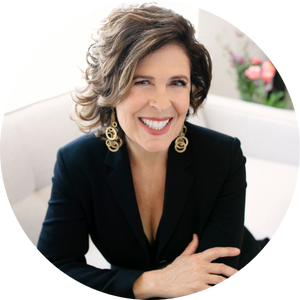
Like what you read? Share it!
Disclosure: Some of the above may be affiliate links that I will be compensated for at no cost to you. They are products or services I’ve either used, vetted or trust. Enjoy!
WE THOUGHT YOU’D ALSO LIKE THESE POSTS


